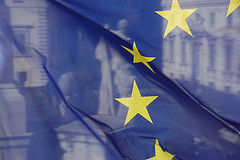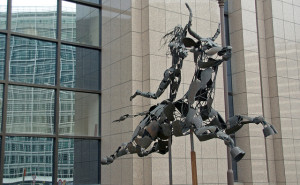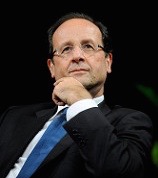Brace yourself, the United States of Europe is not just a pipe dream.
The Plan
Ten EU foreign ministers referred to, interestingly, as the Future Group by the Austrian newspaper, Die Presse, regularly met in early 2012 to discuss transforming the EU. Later that year the number was expanded to eleven.
The goal going forward is to restructure the EU as a parliamentary bicameral system with a directly elected EU president in the top position based on the United States model.
Recommendations were made for fiscal union, plus common foreign and security policies, and a European army, along with more mundane matters like border protection.
Some in the media have already referred to it as the United States of Europe. The task now is to convince the European public.
The Inner Circle
The German and Austrian foreign ministers were credited with cofounding the group and initially inviting 8 other foreign ministers —from Belgium, Denmark, Italy, Luxembourg, the Netherlands, Poland, Portugal and Spain — to participate in the discussions. Afterwards, France officially joined the group.
All this was covered three years ago in an article published by Die Presse on June 19, 2012 and BBC on September 18th of the same year.
France
A July 19, 2015 Reuters piece posted on the Yahoo Finance website shows the current President of France, Francois Hollande, is clearly doing his part to promote further integration. He suggested,
“a government of the euro zone (with) a specific budget as well as a parliament to ensure its democratic control”.
Notice he said “euro zone”. So wouldn’t that mean, to him at least, Britain is as good as gone?
According to Deutsche Welle, Hollande added,
“This choice calls for strengthened organization and, among the countries that will decide it, a vanguard.”
That sounds a lot like past two speed-track scenarios.
His predecessor, Nicolas Sarkozy, does not share the Future Group’s vision, according to Reuters. And Sarkozy may make a comeback bid for the French presidency in 2017.
No doubt, the Future Group is not thrilled with the possibility of another opponent and would prefer to be rid of this sort of thing once and for all. Nation-states under one head, rather than independent nations, takes care of matters like that.
The Kickstart
In July 2015, Hollande also stated,
“Circumstances are leading us to accelerate,”
Those in favor of a more fully integrated Europe believe confrontations with Russia; the ongoing Greek situation, migration, and other issues would be considerably easier to handle if the union became tighter and spoke with one voice.
And what is going on in the Middle East is viewed as another compelling reason to move toward something like a bona fide United States of Europe. On June 26, 2015, EU Vice President and Foreign Policy Chief, Federica Mogherini, told DW News,
“Terrorists want to divide us, they unite us even more”
What’s Ahead?
 As said in past In the News items, a change in Europe is inevitable. And aside from possibility of a Grexit and Brexit, the question seems to be will the rich North depart from EU to divest itself of the cash strapped South, as some suggest? Or will a version of the Future Group’s concept win in the end?
As said in past In the News items, a change in Europe is inevitable. And aside from possibility of a Grexit and Brexit, the question seems to be will the rich North depart from EU to divest itself of the cash strapped South, as some suggest? Or will a version of the Future Group’s concept win in the end?
Comparing these two to each other and to the Bible, a restructured EU — perhaps with a vice president, or its equivalent, over each participating nation-state or region and all under one top executive — is the odds on favorite.
However, there’s also the possibility that a totally different union will emerge.
Photo credits: EU by Sebastià Giralt ; Fr. Pres. by Jean-Marc Ayrault, cropped; EU Flag Rome by bob; Licenses: CC BY 2.0
Read the Reuters article here
Read the Die Presse article here (German only)
Read a related 2014 In the News article here

